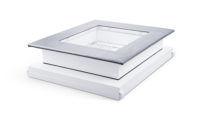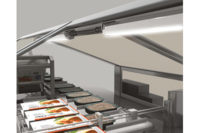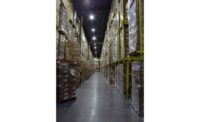It used to be that a lightbulb and a switch were all food and beverage processors and cold storage providers needed to shed light on their operations. Then came the influx of LED lighting, which introduced a plethora of energy efficient advantages.
Today, LED lighting still fares as the lighting solution of choice, and is projected to expand at a CAGR of 11.8% by 2025, according to a report published by Grand View Research, San Francisco, thanks to a shift to green lighting mixed with enhanced energy efficiency standards.
Here’s how other features such as Internet of Things (IoT), cloud-based controls and Bluetooth connections impact the commercial lighting solutions industry.
Technological advancements connect lighting company-wide
Technological advancements, such as cloud-based controls, IoT and Bluetooth connections continue to light the way to a more energy efficient future.
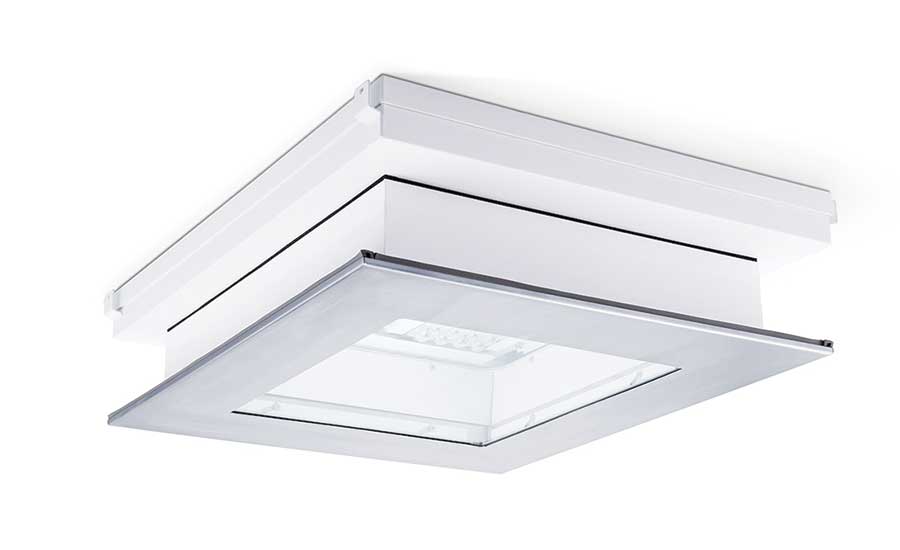
Kenall Manufacturing’s EnviroPro IMP Sealed Top Access LED Luminaire for insulated metal panel (IMP) ceilings is said to reduce IMP ceiling cutout by 40% while protecting the integrity of IMP ceilings.
For instance, using Bluetooth technology to control lighting is a smart decision, according to Greg Amick, cold storage LED project manager for OEO Energy Solutions, Lake Zurich, Ill. Bluetooth occupancy sensing means that lights can turn on autonomously, resulting in less energy usage. Bluetooth daylight harvesting results in only using the amount of light required for a specific space. Less power equates to less cost. And, cloud-based controls offer the ability to monitor and control at an enterprise level.
“Control features have emerged, with the more robust systems taking cues from the IT world,” adds Amick. “I think we should look at lights as endpoints, or mini hotspots. With today’s technology, we have the ability to gather data. What if all of the lights became data gathering spots? What if all of that data temperatures, human presence, inventory, energy usage and air quality could be collected by the lights and sent to the cloud?”
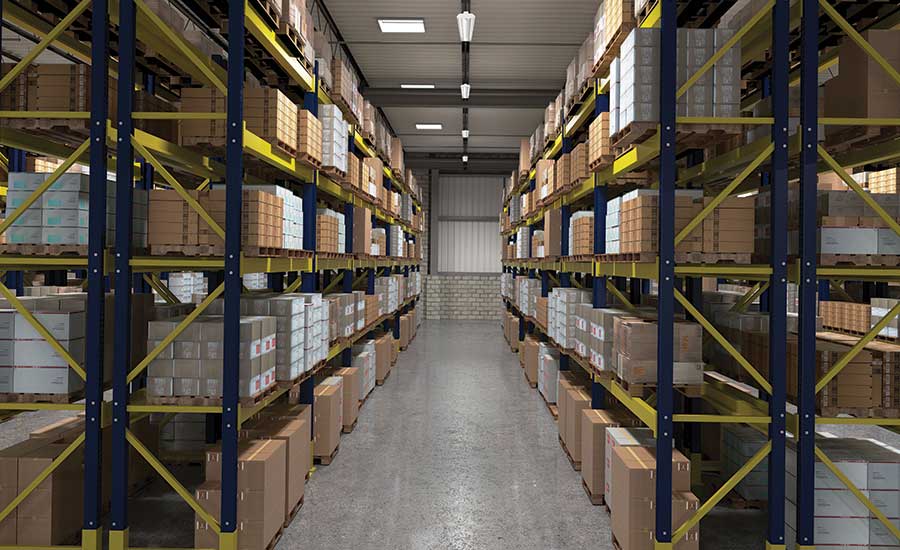
Acuity Brands’ UFIT LED family of low bay lighting from Lithonia Lighting is designed to provide end-to-end illumination with no pixelization and with an eldoLED driver option.
The most impactful evolution of lighting solutions has been in connectivity, according to Audwin Cash, senior vice president of Atrius Enterprise Solutions, Acuity Brands’ IoT platform, Atlanta.
“Our luminaires have evolved to offer wireless communication capabilities, forming a network, which we’ve utilized for a wide range of use cases—indoor positioning, wireless dimming, over-the-air firmware updates, life safety compliance automation, sensor data telemetry and network and fixture health monitoring for proactive maintenance. We have solved the very challenging last-mile problem in IoT—how to connect and power sensors and building peripherals across any space in your building.”
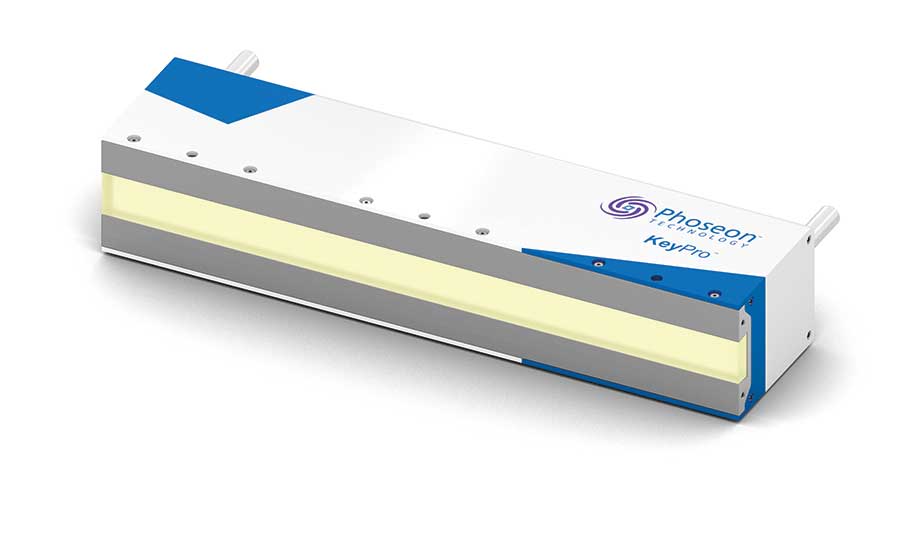
Phoseon Technology introduced what is said to be the first 275nm UV LED disinfection system that surpasses 5 W/cm².
Likewise, Dialight, Farmingdale, N.J., debuted new IntelliLED Connected Industrial Platform, a wireless controls solution for heavy industrial LED lighting. IntelliLED brings Industrial Internet of Things (IIoT) technology to lighting, and integrates with existing automation platforms to simplify plant-wide and enterprise-wide visibility and management.
“Smart lighting control systems like our IntelliLED platform give customers granular visibility and control across a single facility or multiple facilities,” says Luis Ramirez, chief operations officer. “They can see, at a glance, the current output of each fixture, its performance status and when replacement or maintenance may be needed. This helps tremendously with budget and maintenance planning.”
Meanwhile, G&G LED Lighting, Clifton Park, N.Y., is focused on providing high-quality LED lighting products engineered to not only survive, but to also excel in harsh and demanding environments.
“The lighting industry is constantly evolving, and I believe the cold environments market will see future technologies adopted such as IoT and cloud-based controls,” says Erin Noonan, director of marketing. “Customers now have the power to control an entire facility at their fingertips, and with the integration of multiple platforms working together, the functionality of their facilities will be more cohesive using tools that lend to IoT.”
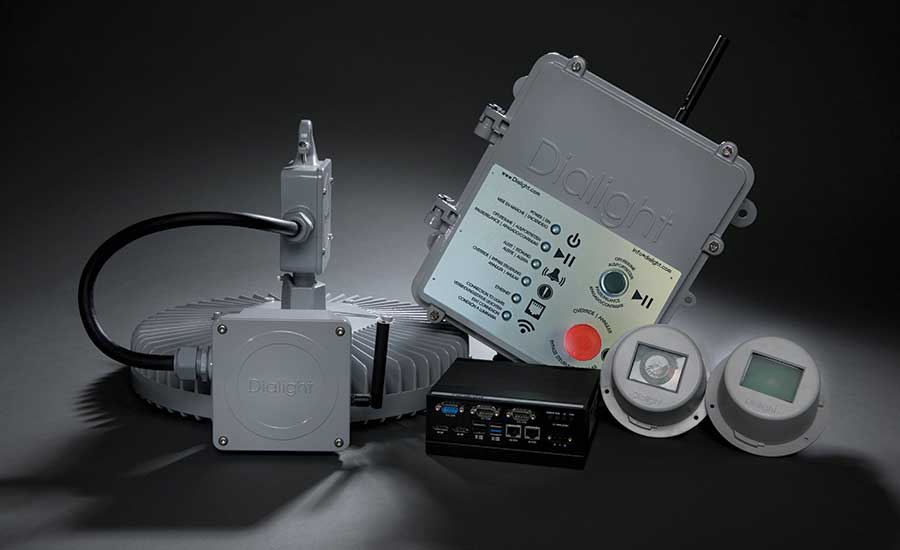
Dialight debuted new IntelliLED Connected Industrial Platform, a wireless controls solution that brings IIoT technology to lighting, and integrates with existing automation platforms to simplify plant-wide and enterprise-wide visibility and management.
Lighting controls light up possibilities
Lighting control systems in refrigerated cold spaces are more capable now than ever, says Tim Stevens, product manager, Kenall Manufacturing, Kenosha, Wis.
“Analytics and area utilization heat mapping are gaining traction among building owners by providing a better understanding of inactive areas within a facility, bringing savings and efficiency to this expensive real estate,” he adds.
Kenall Manufacturing’s EnviroPro IMP Sealed Top Access LED Luminaire for insulated metal panel (IMP) ceilings is said to reduce IMP ceiling cutout by 40% while protecting the integrity of IMP ceilings. And, the new version is compatible with a wide variety of previous installations where old lamp technology is in place, and boasts a DLC certification, making it suitable for energy rebate programs.
“Fixtures for this industry have improved so greatly that nobody should still be using fixtures more than five years old,” Stevens adds. “The energy savings and rebates have, for some of our customers, paid for the new fixtures before the first year.”
For its part, LumiGrow lighting solutions integrate with a number of smart controls, sensors and cloud-based technology, according to Brandon Newkirk, director of marketing for the Emeryville, Calif.-based company.
For instance, smartPAR, its cloud-based wireless control system, allows growers to adjust light spectrum, intensity and photoperiod of their lights to improve crop production. Plus, smartPAR features a lighting and energy management dashboard that displays lighting analytics, and integrates with the company’s light sensors to read sunlight and use predictive analytics to achieve an ideal lighting environment in greenhouses.
LumiGrow also launched BarLight smart LED grow lights for high-density cultivation in the vertical growing cannabis market. LumiGrow TopLight Hybrid is a smart LED toplight for greenhouse and high-bay applications. And, LumiGrow SporeCam captures, inspects and classifies harmful airborne spores for diseases to optimize disease management practices, minimize yield losses and monitor the effectiveness of their treatments.
“As a whole, LED grow lights have become much more efficient, and are becoming the preferred lighting solutions for commercial horticulture applications,” Newkirk says. “Modern LED grow light technology is built to such a higher quality and efficiency than HPS lighting strategies that we will continue to see growers making the business case for removing their older lighting technology for high-tech lighting solutions that can help them remain profitable in an increasingly competitive market.”
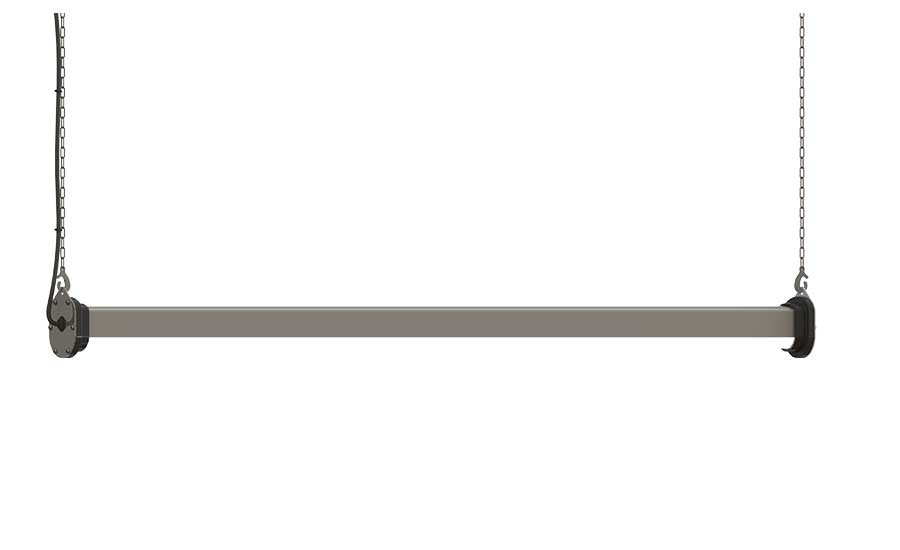
"G&G LED Lighting’s new FPX Food Processing LED Linear Task Light was designed specifically for task lighting applications at inspection tables. "
Disinfection lighting systems offer food safety features
Phoseon Technology, Hillsboro, Ore., introduced what is said to be the first 275nm UV LED disinfection system that surpasses 5 W/cm². Phoseon’s patented semiconductor light matrix (SLM) technology offers deep UV irradiance for disinfection and decontamination applications.
“UV LED disinfection for food safety offers significant process improvements and new capabilities in many food and beverage processing applications,” says Jay Pasquantonio, strategy director, life sciences of Phoseon. “Phoseon’s patented SLM technology encapsulates LEDs, arrays, optics and cooling to maximize UV LED performance. These components are engineered into high-intensity LED light engines that enable significant process improvements due to their low heat emission, high intensity, precise control and long operating life leading to consumer safety for food processing. The intense UV output offers reduced maintenance, consistent results and increased manufacturing speeds.”
UV-C LEDs are the next wave in the LED revolution, offering numerous advantages for the safety of food products in cold environments, Pasquantonio adds.
“Potentially, UV-C LEDs could be used for the treatment of beverages, disinfection of produce surfaces and other food contact and non-contact surfaces,” he says. “Example of food safety applications include conveyor surface for meat/poultry or other processing, dairy packaging for milk, yogurt, cream cheeses and dips, baking UV tunnels over a production line and treating fruits and vegetables with UV for longer shelf life.”
Customization for the every customer
Acuity Brands’ JCBL LED from Lithonia Lighting replaces up to 400W HID 6-lamp T5HO or 8-lamp T8 luminaires, detects both occupancy and daylight and comes equipped with Bluetooth programmable sensors or nLight wired and wireless network controls for the creation of zones, scheduling, time-based control and more.
“From an energy manager’s perspective, our ability to offer wireless dimming significantly increases the energy savings they get from a lighting retrofit because they benefit from dimming, scheduling and daylight harvesting,” says Cash. “From a controls and maintenance perspective, our lighting network is designed as a cloud-first solution, allowing us to deliver enterprise-scale lighting management even for sites [that] lack a building management system.”
Industrial LED lighting technology is in high demand for its energy efficiency. That’s why Dialight’s new High Output High Bay delivers 72k lumens at 149 lumens per watt and features a remote power supply that enables mounting up to 200 feet away from the fixture.
In its signals and components line, Dialight debuted the new 653 and 654 Series snap-in panel mount indicators for mounting holes larger than 1-half inch, and a new 556 Series Constant Intensity product designed for rugged, outdoor battery-powered applications in 1-inch mounting holes.
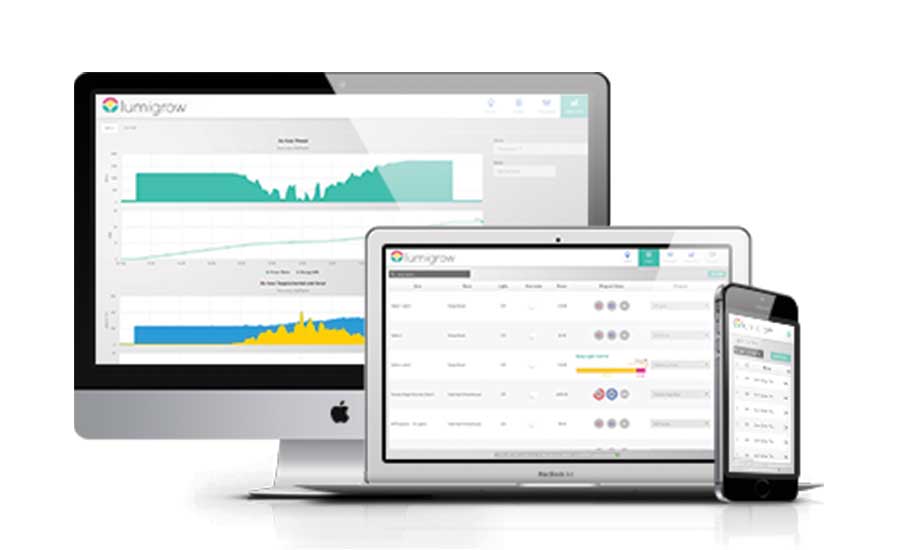
LumiGrow’s smartPAR cloud-based wireless control system allows growers to adjust light spectrum, intensity and photoperiod of their lights to improve crop production.
“The beauty of LED lighting is that it is extremely versatile and able to be used in a wide variety of applications, including cold. And, because it’s a networkable electronics technology, it’s easily future-ready and compatible with things like cloud-based management, IoT and other digital innovations,” says Ramirez. “There are even opportunities to install other sensors on LED fixtures, such as environmental monitors and RFID/asset management, as well as to use the LED lighting network to backhaul other types of data. Once the network is in place, the potential is limited only by the ingenuity of lighting and plant engineers. This makes smart LED lighting a major component of plant automation and safety, and a smart investment in efficiency and productivity.”
For its part, G&G LED Lighting introduced the FPX Food Processing LED Linear Task Light, designed specifically for task lighting applications at inspection tables. Plus, its new VPX Vaporsealed LED Linear is a permanently sealed fixture ideal for washdown areas, walk-in coolers, freezers and other applications where moisture, dust and humidity are frequently present.
Gone are the days of the simple light switch. Smart controls, IoT functions, cloud-based connectivity and other technologically advanced features are the future of the commercial lighting industry.
Click here to learn more about these and other lighting solutions.


